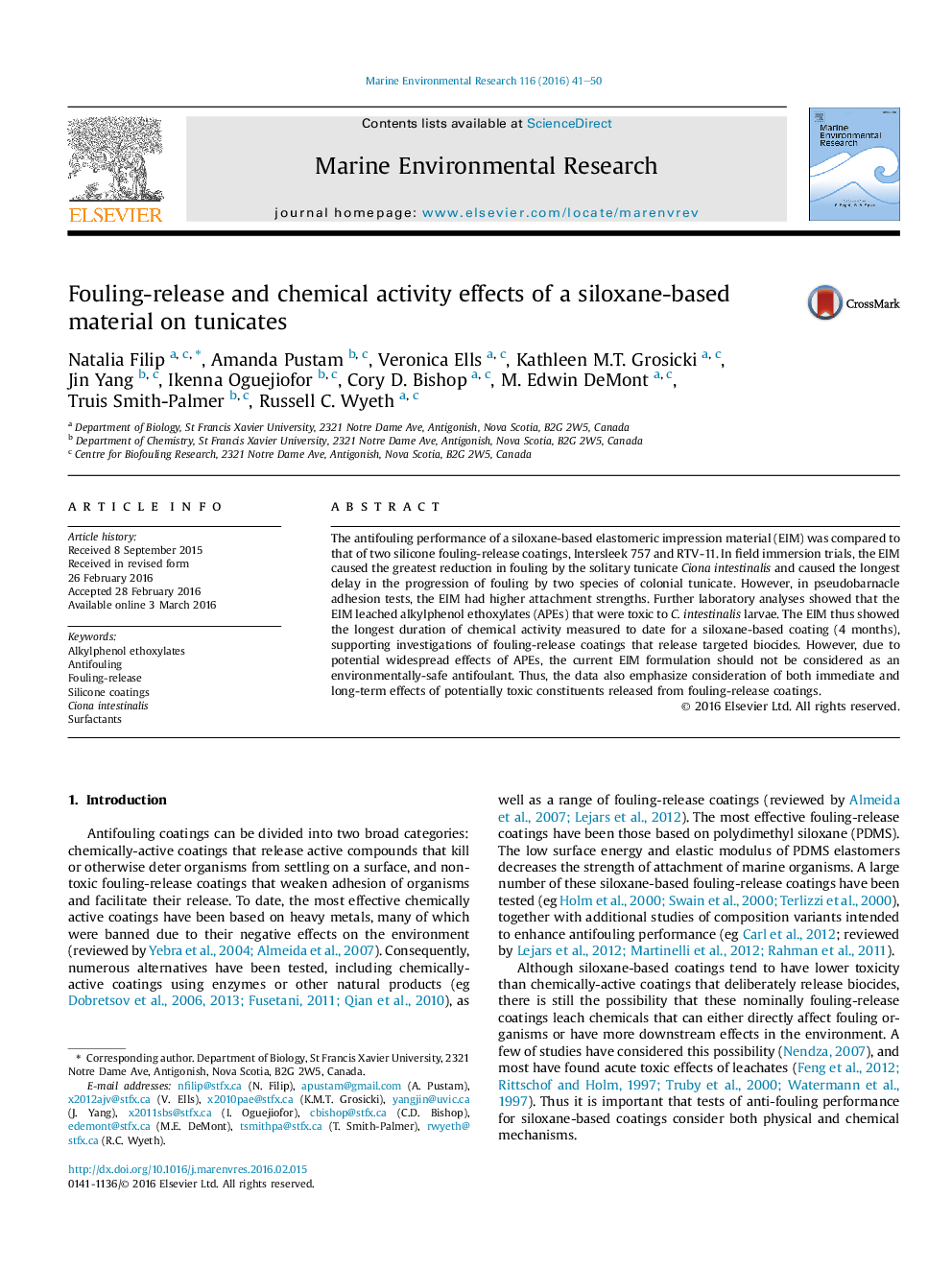| Article ID | Journal | Published Year | Pages | File Type |
|---|---|---|---|---|
| 4550602 | Marine Environmental Research | 2016 | 10 Pages |
•We tested the antifouling performance of a siloxane-based elastomeric impression material (EIM).•The EIM significantly decreased fouling by invasive tunicates in field-immersion trials.•The EIM was intermediately effective at decreasing adhesion strength.•The EIM leached one or more alkylphenolethoxylates that were toxic to tunicate larvae.
The antifouling performance of a siloxane-based elastomeric impression material (EIM) was compared to that of two silicone fouling-release coatings, Intersleek 757 and RTV-11. In field immersion trials, the EIM caused the greatest reduction in fouling by the solitary tunicate Ciona intestinalis and caused the longest delay in the progression of fouling by two species of colonial tunicate. However, in pseudobarnacle adhesion tests, the EIM had higher attachment strengths. Further laboratory analyses showed that the EIM leached alkylphenol ethoxylates (APEs) that were toxic to C. intestinalis larvae. The EIM thus showed the longest duration of chemical activity measured to date for a siloxane-based coating (4 months), supporting investigations of fouling-release coatings that release targeted biocides. However, due to potential widespread effects of APEs, the current EIM formulation should not be considered as an environmentally-safe antifoulant. Thus, the data also emphasize consideration of both immediate and long-term effects of potentially toxic constituents released from fouling-release coatings.
